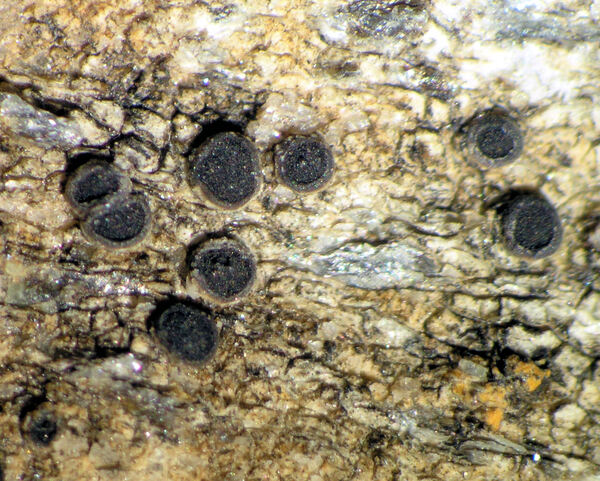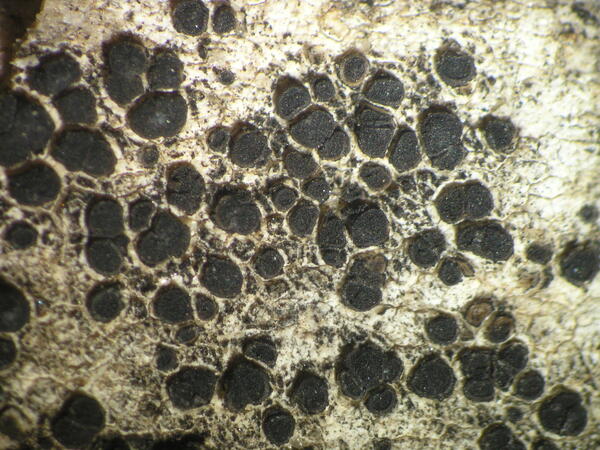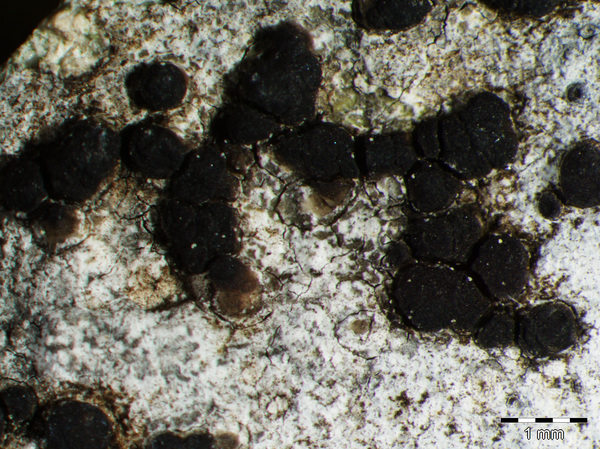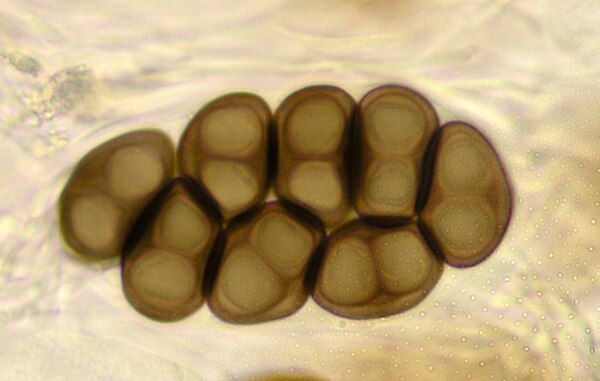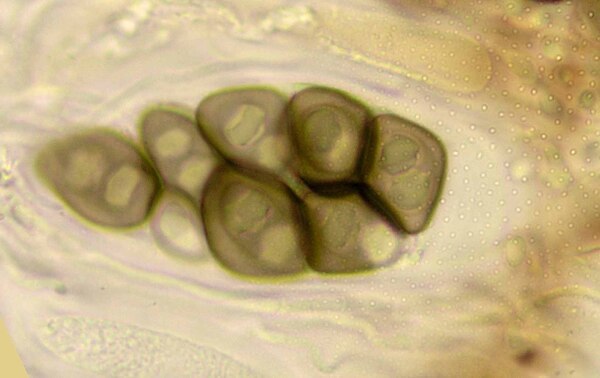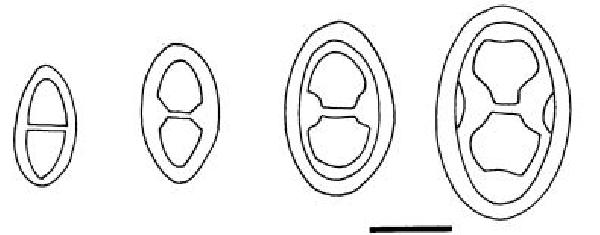Rinodina tunicata H. Mayrhofer & Poelt
Bibl. Lichenol., 12: 153, 1979.
Synonyms:
Distribution: C - Tosc (TSB 35281), Abr (Nimis & Tretiach 1999), Mol (Nimis & Tretiach 2004, Caporale & al. 2008), Sar. S - Pugl (Nimis & Tretiach 1999), Cal (Rambold & al. 1994), Si (Nimis & al. 1996b, Giralt & Llimona 1997, Caniglia & Grillo 2005, 2006).
Description: Thallus crustose usually endosubstratic and poorly evident, rarely very thinly episubstratic and then whitish to pale grey, without a distinct prothallus. Apothecia initially lecanorine, but rapidly becoming pseudolecanorine, immersed in the rock to subsessile, 0.5-0.8(-1) mm across, with a flat to slightly convex, dark brown to black disc, a very thin, soon excluded thalline margin, and a rather thick, entire, persistent proper margin. Thalline exciple dark brown in outer part, pale brown within; proper exciple densely inspersed with oil droplets; epithecium reddish brown, K-; hymenium colourless, 100-140 μm high, inspersed with oil droplets; paraphyses 1.5-2 μm thick at mid-level the apical cells 4-5 μm wide, with a brown cap; hypothecium colourless, inspersed with abundant oil droplets. Asci 8-spored, clavate, the K/I+ blue tholus penetrated by a faintly amyloid apical cushion with parallel or diverging flanks, the wall K/I-, surrounded by a K/I+ blue outer layer, Lecanora-type. Ascospores 1-septate, brown, ellipsoid 18-24 x (10-)12-16 μm, Tunicata-type, with a thick outer wall, the lumina thus appearing double-walled, the torus absent, with ontogeny of type A. Photobiont chlorococcoid. Spot tests: K-, C-, KC-, P-, UV-. Chemistry: without lichen substances. Note: a Mediterranean to mild-temperate lichen found on compact, pure limestone or dolomite at relatively low elevations; probably more widespread in Southern Italy.
Growth form: Crustose
Substrata: rocks
Photobiont: green algae other than Trentepohlia
Reproductive strategy: mainly sexual
Commonnes-rarity: (info)
Alpine belt: absent
Subalpine belt: absent
Oromediterranean belt: absent
Montane belt: absent
Submediterranean belt: very rare
Padanian area: absent
Humid submediterranean belt: rare
Humid mediterranean belt: rare
Dry mediterranean belt: very rare

Predictive model
Herbarium samples


P.L.Nimis; Owner: Department of Life Sciences, University of Trieste
Herbarium: TSB (38340)
2008.02.25
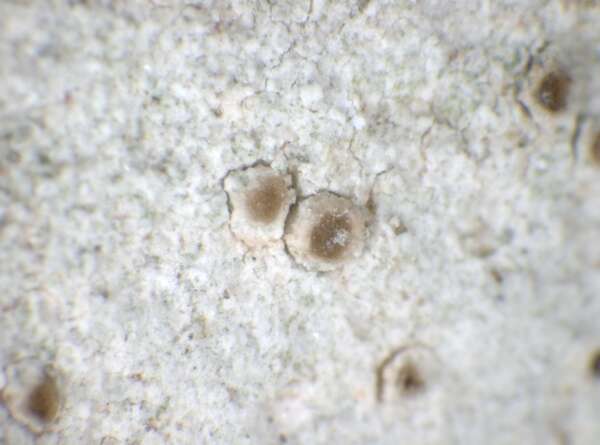

P.L. Nimis; Owner: Department of Life Sciences, University of Trieste
Herbarium: TSB (20118)
2001/11/29
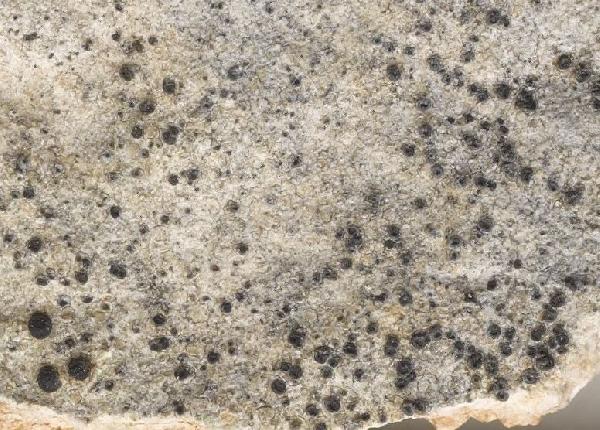
Modified from: https://gzu.jacq.org/GZU000286038
GZU000286038 - Hertel,H. & Hertel,I. 19261 Date 1978-04-23
Location Italy / Sicilia
Label Italien, Sizilien, Prov. Enna: NW- Rücken des M. Cane, ca. 8 km NW Pietraperzia, "Minniti" ; Alt. 400 m - 450 m
Habitat Schrägflächen eines großen, exponierten Kalkblockes
Growth form: Crustose
Substrata: rocks
Photobiont: green algae other than Trentepohlia
Reproductive strategy: mainly sexual
Commonnes-rarity: (info)
Alpine belt: absent
Subalpine belt: absent
Oromediterranean belt: absent
Montane belt: absent
Submediterranean belt: very rare
Padanian area: absent
Humid submediterranean belt: rare
Humid mediterranean belt: rare
Dry mediterranean belt: very rare

Predictive model
| Herbarium samples |


P.L.Nimis; Owner: Department of Life Sciences, University of Trieste
Herbarium: TSB (38340)
2008.02.25


P.L. Nimis; Owner: Department of Life Sciences, University of Trieste
Herbarium: TSB (20118)
2001/11/29

 INDEX FUNGORUM
INDEX FUNGORUM
 GBIF
GBIF
